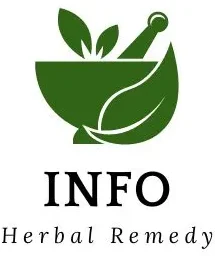In the realm of hepatology, the exploration of phytotherapeutic interventions for hepatic steatosis has garnered significant attention. Among these, Silybum marianum, colloquially known as milk thistle, has emerged as a subject of considerable scientific scrutiny.
This discourse aims to elucidate the multifaceted benefits of milk thistle for fatty liver, exploring its potential efficacy through the lens of contemporary research.
Pathophysiological Context: Understanding Hepatic Steatosis
Firstly, it is imperative to establish a foundational understanding of hepatic steatosis. Characterized by aberrant lipid accumulation within hepatocytes, fatty liver disease manifests in two primary etiological variants:
- Alcoholic Fatty Liver Disease (AFLD)
- Non-alcoholic Fatty Liver Disease (NAFLD)
Both conditions can progress to more severe hepatocellular injury, underscoring the critical need for effective interventions. It is within this context that the benefits of milk thistle have gained prominence in scientific discourse.
Phytochemical Composition: The Source of Milk Thistle’s Hepatoprotective Potential
The purported benefits of milk thistle are primarily attributed to its flavonolignan complex, collectively known as silymarin. This complex comprises several bioactive constituents, including:
- Silybin (the most prevalent and pharmacologically active component)
- Silydianin
- Silychristin
Understanding the phytochemical profile of milk thistle is crucial for appreciating its potential benefits for fatty liver management.
Elucidating the Benefits of Milk Thistle for Fatty Liver: Mechanisms of Action
The hepatoprotective effects underlying the benefits of milk thistle operate through multiple molecular pathways:
Antioxidant Activity
One of the primary benefits of milk thistle lies in its potent antioxidant properties. Silymarin has demonstrated the capacity to:
- Scavenge free radicals
- Enhance endogenous antioxidant systems (e.g., glutathione)
- Mitigate oxidative stress-induced hepatocellular damage
These antioxidant effects are particularly relevant in the context of fatty liver, where oxidative stress plays a pivotal role in disease progression.
Anti-inflammatory Effects
Chronic inflammation is a hallmark of progressive fatty liver disease. The anti-inflammatory benefits of milk thistle include:
- Modulation of pro-inflammatory cytokine cascades
- Inhibition of NF-κB activation
- Attenuation of hepatic stellate cell activation
By tempering the inflammatory milieu, milk thistle may help mitigate the progression from simple steatosis to steatohepatitis.
Metabolic Regulation
Emerging evidence suggests that the benefits of milk thistle extend to metabolic regulation:
- Enhancement of insulin sensitivity
- Modulation of lipogenic pathways
- Promotion of β-oxidation of fatty acids
These metabolic effects address the core pathophysiological disturbances in fatty liver disease, potentially offering a multi-pronged therapeutic approach.
Membrane-stabilizing Effects
Another notable benefit of milk thistle for fatty liver is its membrane-stabilizing properties:
- Enhancement of hepatocyte membrane integrity
- Modulation of membrane phospholipid composition
- Reduction of hepatocellular enzyme leakage
These effects may contribute to the overall hepatoprotective potential of milk thistle in the context of fatty liver disease.
Related Guide: Milk Thistle for Fatty Liver: Exploring the Scientific Evidence (2025)
Quantifying the Benefits of Milk Thistle
While preclinical data on the benefits of milk thistle are promising, clinical evidence provides a more nuanced picture:
- A meta-analysis published in “Medicine” (2017) aggregated data from eight randomized controlled trials (n=587) evaluating silymarin in NAFLD. The analysis revealed statistically significant reductions in serum aminotransferases (ALT and AST) compared to placebo, suggesting potential hepatocellular protection.
- A double-blind, placebo-controlled study in “Phytomedicine” (2015) investigated the synergistic effects of silymarin and α-tocopherol in NAFLD patients. The combination therapy demonstrated improvements in hepatic steatosis grade, as assessed by ultrasonography, and amelioration of insulin resistance markers.
- A systematic review in the “World Journal of Hepatology” (2020) highlighted the need for more robust, large-scale clinical trials to definitively establish the efficacy and benefits of milk thistle for fatty liver management.
Optimizing the Benefits of Milk Thistle for Fatty Liver
When considering the clinical application of milk thistle for fatty liver benefits, several pharmacological factors warrant attention:
- Bioavailability: The poor oral bioavailability of silymarin due to extensive first-pass metabolism necessitates consideration of novel formulations (e.g., phosphatidylcholine complexes) to enhance absorption and maximize the benefits of milk thistle.
- Dosage: Optimal dosing regimens to achieve the full benefits of milk thistle remain undefined, with studies employing silymarin doses ranging from 210 to 800 mg daily.
- Duration of therapy: The chronic nature of fatty liver disease suggests that long-term administration may be necessary to realize the full benefits of milk thistle, necessitating safety evaluations for prolonged use.
Contextualizing the Benefits of Milk Thistle for Fatty Liver
While the benefits of milk thistle for fatty liver are promising, it is crucial to contextualize its use within a comprehensive therapeutic strategy:
- Lifestyle modifications: Implementing caloric restriction and increasing physical activity remain cornerstone interventions, potentially synergizing with the benefits of milk thistle for fatty liver.
- Nutritional interventions: Adherence to a Mediterranean dietary pattern, characterized by high monounsaturated fatty acid intake and low glycemic index, may complement the benefits of milk thistle.
- Management of comorbidities: Aggressive management of comorbid conditions, including type 2 diabetes mellitus and dyslipidemia, is crucial for comprehensive hepatoprotection.
Conclusion
The potential benefits of milk thistle represent an intriguing intersection of traditional phytotherapy and modern hepatology. While preliminary evidence suggests promising hepatoprotective effects, primarily mediated through antioxidant, anti-inflammatory, and metabolic pathways, the current body of clinical evidence necessitates further investigation.
Future research directions to fully elucidate the benefits of milk thistle should include:
- Large-scale, long-term randomized controlled trials
- Mechanistic studies to further delineate molecular pathways
- Investigations into potential synergistic effects with other interventions
As our understanding of the complex pathophysiology of fatty liver disease continues to evolve, so too must our exploration of novel therapeutic strategies. The potential benefits of milk thistle for fatty liver underscore the importance of continuing to bridge the gap between traditional botanical medicine and contemporary hepatology in our quest for effective interventions for this increasingly prevalent hepatic disorder.



